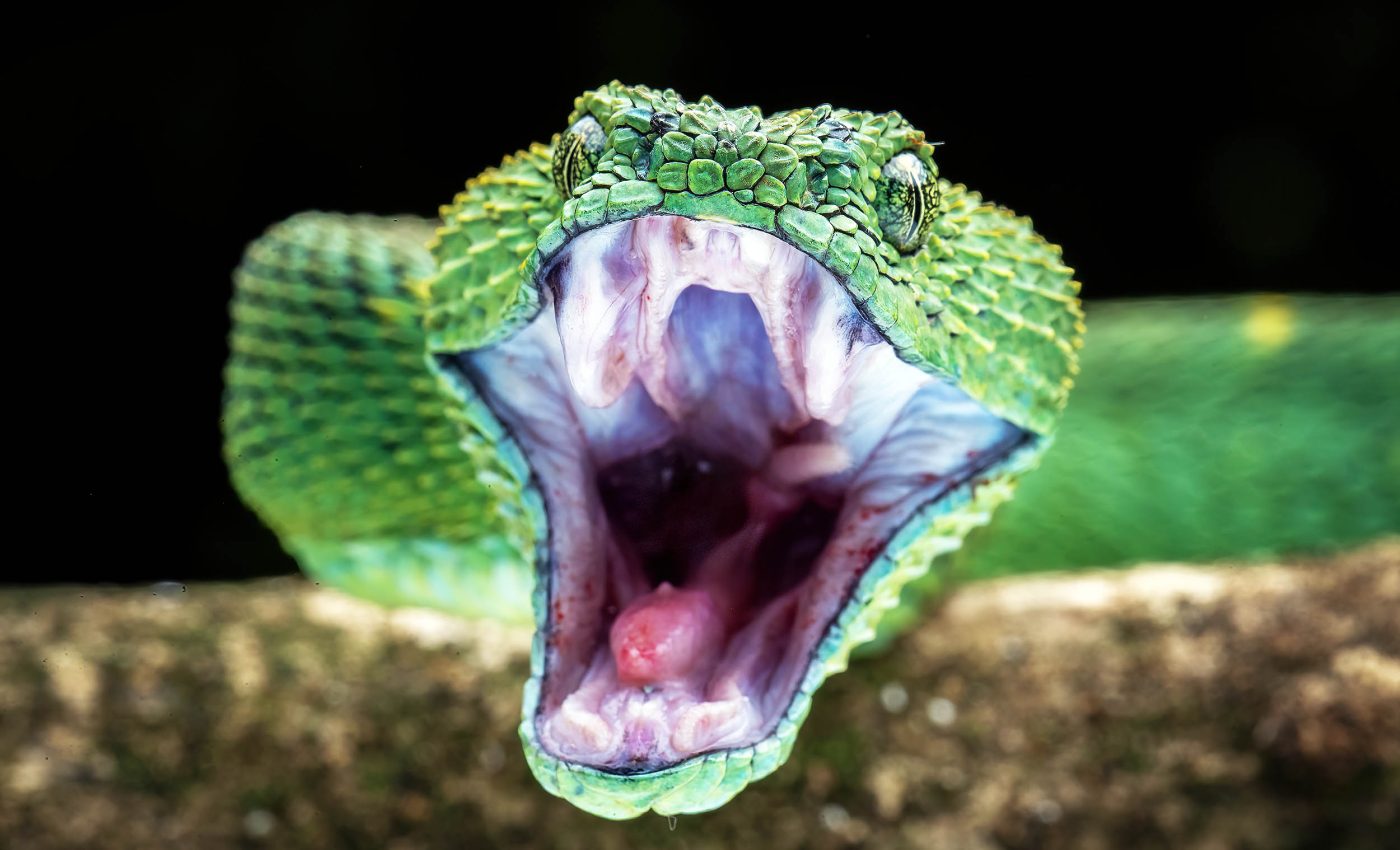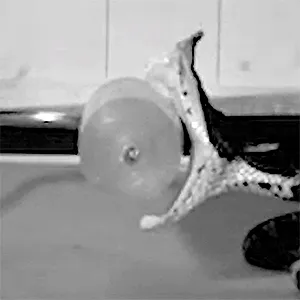
Snake strike speed measured for hundreds of species, video results are nothing short of stunning
A tenth of a second is all a viper snake needs to land a bite. In Paris, a team filmed hundreds of venomous snakes and mapped their strike speed in 3D to see exactly how they do it.
The work tracked 36 species from three major families and uncovered three distinct strategies, each tuned for fast venom delivery in detail. One number matters most here: 0.1 seconds in controlled laboratory tests.
Three families, three tactics
In a new study, researchers recorded 36 snake species striking warm medical gel and found that vipers, elapids, and colubrids use different playbooks. Most bites landed faster than many prey reactions.
Lead researcher Silke Cleuren of Monash University led the filming at Venomworld near Paris, working with colleagues and expert handlers. The team captured more than 100 strikes at 1,000 frames per second.
“Vipers typically reached higher peak velocities than elapids,” wrote Cleuren.
Vipers hit hard from a coiled start, then fine tune their bite by moving a fang forward before closing their jaws to inject.
Elapids are a family of snakes characterized by their permanently erect fangs at the front of the mouth. They tend to creep closer first, then lunge and bite several times as jaw muscles squeeze venom into the target.
Colubrids are the largest snake family. They often sweep the jaws side to side to open a curved cut and feed venom into the wound.
Filming snake strike speed
To keep the test consistent, the team used ballistic gel warmed to body temperature and shaped like a small animal. The gel let cameras capture fang entry, venom leakage, and even rare events like a broken fang.
Two high speed cameras at different angles turned quick blurs into clear 3D coordinates. Using both views allowed precise triangulation of points on the head and on the gel.
From those coordinates, the team calculated kinematics: the measurable parts of movement such as velocity, acceleration, and gape angle. The approach allowed fair comparisons across species tested in the same arena.
The target size stayed constant so species faced the same challenge. That consistency helps isolate species differences from setup effects.
Viper snakes’ incredible strike speed
Top viper speeds in this dataset reached roughly 10 miles per hour, while the fastest elapid in the test topped about 5.6 miles per hour. One blunt nosed viper reached full contact in 0.022 seconds without missing.
The quickest acceleration reported for a viper in this work was about 2,330 feet per second squared, with many strikes exceeding 1,200 feet per second squared. Those values explain why prey rarely gets a head start once the snake moves.
Distance matters for speed. When the snake started a little farther away, peak velocity rose, a simple result of staying under positive acceleration for longer.
Vipers were usually faster than elapids here, but that is not a universal rule. Earlier work showed non viper species can match viper speed in controlled tests, and that overlap challenges old assumptions.
Real life bites
Field research has captured strikes and escapes at night, including the rapid leaps of desert kangaroo rats. Those recordings show how a prey animal’s reflex window makes timing everything.
Temperature also shapes performance. Lab and field results indicate strike speed can change with body temperature. This is a key factor for cold blooded hunters, and that pattern helps explain seasonal shifts.
In nature, strike tactics shift with distance and cover, which alters the race. A short lunge from ambush favors speed, while a close approach lets repeated biting work.
Snake fangs and strike speed
The needles in front of a viper’s mouth are hinged and long, which allows deep entry but also the need to aim precisely. A classic analysis of 86 viper species documented frequent fang repositioning after first contact.
Repositioning matters because it optimizes the angle and depth for venom flow. It also helps when the first poke hits bone or slides on tough skin.
Colubrids have rear fanged dental gear that encourages a sawing motion. That motion opens a crescent shaped wound and moves venom into tissue without a single deep stab.
This project adds new clarity to when and how repositioning happens. In the recordings, the fang was often fully erected before the strike reached top speed, then seated and used to inject.
“Prey was often reached within 100 ms, which falls within the mammalian startle response,” wrote Cleuren. This startle response leaves a very narrow margin.
“Rattlesnakes may not attempt to maximize strike speed when attacking prey,” wrote Matthew D. Whitford, the study’s author. That nuance helps explain why some strikes look quick but controlled rather than flat out.
Lessons for people and wildlife
For prey, evading a speedy snake strike depends on sensing danger early, not outrunning the lunge once it starts. For snakes, strategy tunes the physics to the target, whether that is a mouse, a lizard, or a bird.
For people who work with snakes, this is a reminder that motion sets the rules. Most bites happen faster than a human can react, so distance and steady handling matter more than reflexes.
Good protocols keep hands out of range and keep sessions short. Training that emphasizes calm positioning reduces surprise moves that trigger strikes.

Click here to watch a detailed video showing how snakes bite…
The study is published in the Journal of Experimental Biology.
—–
Like what you read? Subscribe to our newsletter for engaging articles, exclusive content, and the latest updates.
Check us out on EarthSnap, a free app brought to you by Eric Ralls and Earth.com.
—–













